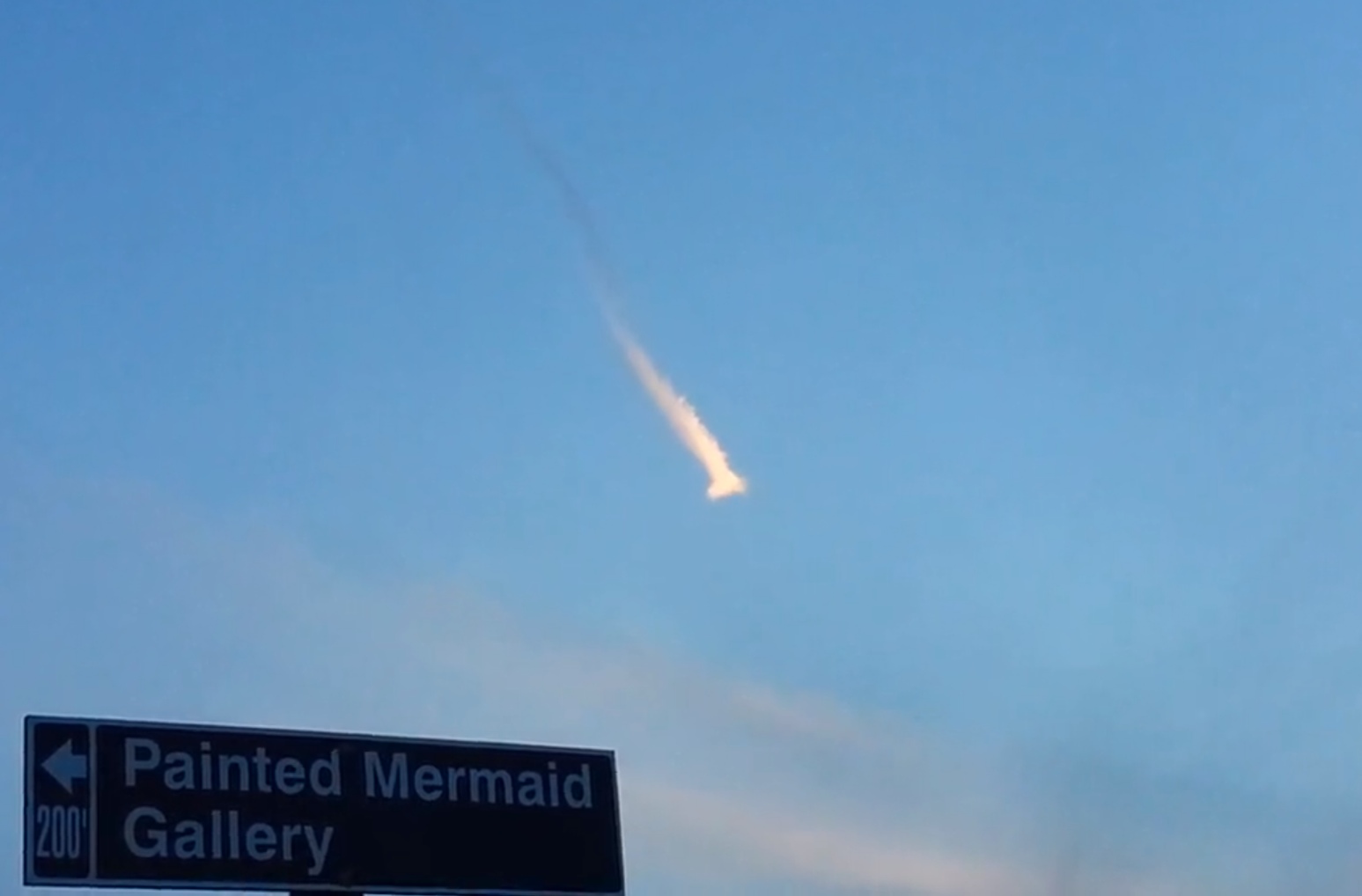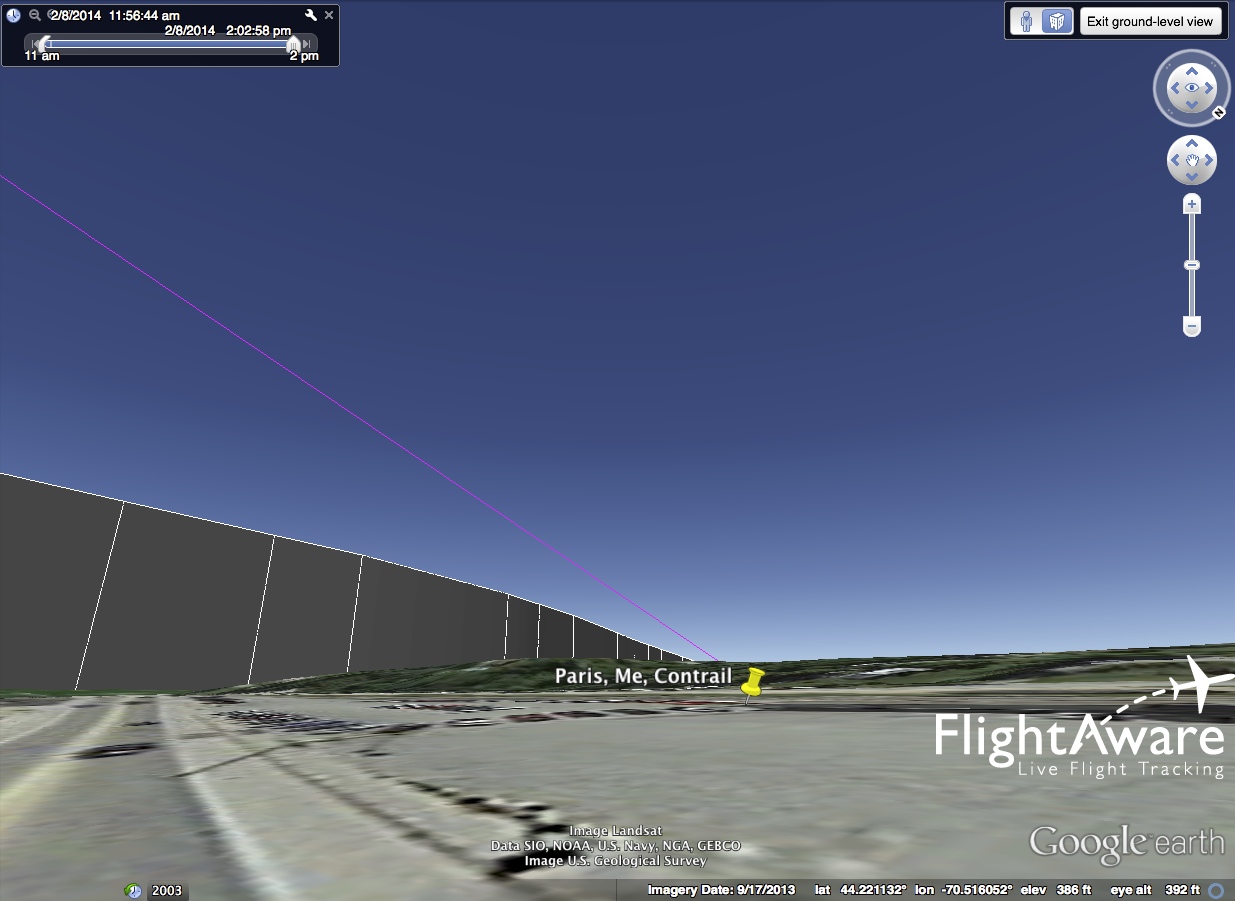Robert Tankersley
Member
[Admin Update] Solved! It's a short segment of contrail from flight UA 4597, Illuminated head-on by the setting sun, casting a shadow behind, and drifting and spreading in the wind. Full explanation in the thread below.




Last edited by a moderator:














